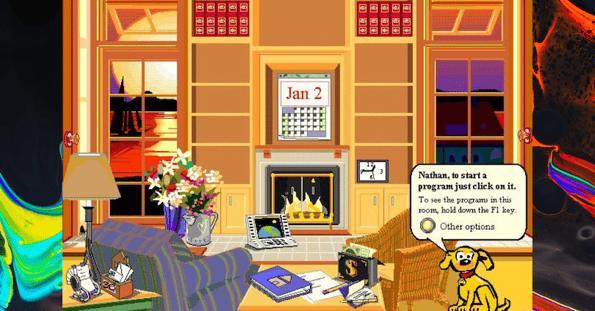Long before Microsoft’s investment in OpenAI or its AI chatbot Copilot, it offered a much cuter collection of digital assistants.

We’re talking about Bob, a short-lived and much-hated user interface with a surprisingly long-lasting impact.
What about Bob?
Bob launched in 1995 for a variety of Windows products, including Windows 95.
Instead of the standard Windows desktop, Bob offered a cartoon house where users could click on a letter to access an email client or a notebook to open a word processor.
Several cartoon assistants offered tips and personalization options including Rover, a cartoon dog, and William Shakespeare.
The idea…
… was that a familiar interface would be user-friendly and fun to use, but most people hated it.
Melinda French Gates — then Bill Gates’ fiancee and a Microsoft manager — helmed the project, and noted that it “needed a more powerful computer than most people had back then and a lot of critics found the visuals too cute.”
The New York Times lambasted it as clunky, inconsistent, irritating, and looking as though it’d been designed by “an esthetically challenged sixth-grader.”
Bob was discontinued in 1996.
But elements of Bob lived on
The software fueled Clippit, AKA Clippy, the cartoon paper clip that offered tips to Microsoft Word users, and Rover later appeared as a Windows XP search assistant.
Microsoft designer Vincent Connare also created Comic Sans to replace the more formal Times New Roman in Rover’s speech bubbles, but because it wasn’t ready at Bob’s launch, it appeared in a later font pack and in a movie maker program.
In many ways, Bob was ahead of its time. VR applications now frequently use pleasant home environments as interfaces, including Meta Quest and Apple’s Vision Pro, and AI-powered chatbot assistants are everywhere. They’re just a little more sophisticated.
Fun fact: Microsoft traded the domain name Bob.com to Bob Kerstein, who owned the domain Windows2000.com, in 1999.
